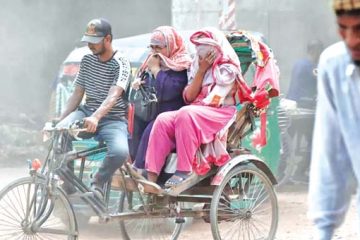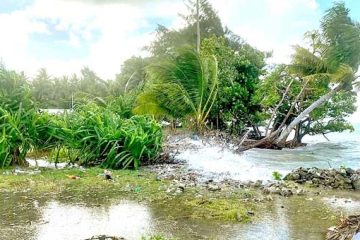Zillul Hye Razi
 The Generalised System of Preferences (GSP) of the European Union (EU) is a preferential trade arrangement that allows reduced or zero import duties for imports from developing countries. It is a unilateral arrangement and includes the Everything But Arms (EBA) arrangement, which grants duty and quota-free access to all goods, except arms originating in the least-developed countries (LDCs).
The Generalised System of Preferences (GSP) of the European Union (EU) is a preferential trade arrangement that allows reduced or zero import duties for imports from developing countries. It is a unilateral arrangement and includes the Everything But Arms (EBA) arrangement, which grants duty and quota-free access to all goods, except arms originating in the least-developed countries (LDCs).
The EBA arrangement is applicable for an indefinite period, while regular the GSP and GSP Plus are reviewed and could be changed after a specific period.
A LONG TIME BENEFICIARY
Many people think that Bangladesh received duty free access to the EU only after the EBA was introduced in 2001. In reality, Bangladesh enjoyed the duty free access to the European Community (now EU) for all its exportable products since 1981 with some restrictions on the export of readymade garments (RMG).
Later, the European Commission (EC)-Bangladesh Textile Agreement of 1986 removed the quantitative restrictions on RMG. Some people think the phenomenal growth of RMG exports to the EU in the last two decades has been the result of duty free access through GSP. But that is not the whole truth.
During the textile quota regime under the Multifibre Arrangements (MFA), Bangladesh enjoyed a quota free access to the EU as an LDC. On the other hand, competitors of Bangladesh were constrained by quota. The result, for example, all the T-shirts exported by China, India and Pakistan in 1993 together had been less than that of Bangladesh.
The originating rule for GSP had been difficult to comply with for a long time. For knitted products (T-shirts and sweaters), yarn had to be locally produced and for woven products (shirts and trousers), the fabric needed to be locally manufactured to qualify for GSP. As a result, the GSP utilisation rate remained less than 30 percent for RMG for a long time, before the growth of the backward linkage industries.
The situation changed dramatically from 1999 when the EC relaxed the rules for knitted products — the use of imported yarn for knitted products was allowed for the GSP benefit. It may be mentioned that the standard import duty for RMG in the EU is 12 percent. Under the GSP, assuming RMG items adhere to the rules of origin, importers of Bangladeshi products will not pay duties. But imports from China will have to pay full duties (no GSP for China in textiles and clothing items), while Indian products will pay a reduced duty of 9.6 percent. Because of the relaxed rules, knit exports boomed and more than 70 percent of total knit exports from Bangladesh now go to the EU. However, T-shirts and sweaters dominate the scenario with more than 1 billion euros worth of export a year for each in recent times.
REVISED RULES OF ORIGIN: A NEW HORIZON?
Bangladesh holds the third position, after China and Turkey, as a supplier of clothing to the EU for the last few years. This is obviously for the quota free entry and the duty free access under GSP. Since 1999, there were no major changes in the rules of origin for GSP. After protracted deliberation with different stakeholders within and outside the EU, a revision of the rules of origin is being finalised, with an objective to simplify the rules.
The proposed revision: (http://ec.europa.eu/taxation_customs/customs/customs_duties/rules_origin/preferential/article_777_en.htm) allows the duty free export of woven/knit RMG even with imported fabric — but for LDCs only.
For other industrial products, the rule mentions value addition of 30 percent — again for LDCs only. It is expected the new rules will be applied from 2011, if the legislative process in the EU is not delayed.
It is quite clear that within the RMG sector, the exporters of woven items are likely to be the beneficiaries of the change. It may also provide opportunities for the local exporters to go for the higher end of the EU market as Bangladesh could not avail GSP under the existing rules, as high quality fabric is not sufficiently manufactured locally.
The relaxed rules for woven items for LDCs, as envisaged, would also put a balance between the export of knit and woven items to the EU. Presently, the GSP utilisation rate for textile items is 78 percent, which means about 22 percent of the goods enter the EU by paying full duty. It is clear that the goods that do not get free access are mostly the woven goods, mainly shirts. About half the total export of trousers (denim and other cotton-made) receives duty free access, but only about 27 percent of cotton shirts receive the GSP benefit.
NEW CHALLENGES
There are some other dimensions to RMG exports to the EU as well. A successful conclusion of the Doha round negotiations under the World Trade Organisation is expected to reduce the duty on industrial products, like textile items. The so-called preferential erosion would than become a hard fact for Bangladeshi exporters enjoying a price edge over competitors owing to a high tariff structure of the clothing items.
In another scenario, the EU is finalising its Free Trade Agreement (FTA) with India and the individual Asean countries. Accordingly, in a few years (FTA comes in stages); Bangladesh will be levelled with its immediate competitors, except for China, in RMG exports to the EU. As a short term gain, the nation is likely to get some export orders from the European buyers who are willing to shift business from Sri Lanka, as the country recently lost its duty free status under GSP Plus.
Bangladesh has so far been unsuccessful in receiving the duty free access for RMG exports to the US. Therefore, limited space will be available to expand RMG exports if the EU market shrinks for Bangladesh. The recent international campaign by rights groups on the core labour standards and living wages for RMG workers in Asia, including Bangladesh, shows that the cost of labour may not remain a strong point for Bangladeshi products in the long run. The key word, therefore, is competitiveness, for marketing in the EU in future. The country has already shown its capability to export RMG items without any preferential advantages in the USA.
BUYERS’ MARKET
The growth of RMG exports to the EU from Bangladesh in 2009 remained positive, even when others suffered the negative impacts of global recession. Overall exports from Bangladesh to the EU in the first 6 months of this year, of which about 90 percent is RMG, showed a consistent upward trend, although the first quarter experienced a negative trend than the same time last year.
The country has firmly established its global position as a major source of clothing. In the last two decades, sourcing sweaters, T-shirts, shirts and trousers, all basic and less expensive items from Bangladesh, has been a practical and profitable option for the buyers.
This position is unlikely to change suddenly by any economic factor, as buyers would find it difficult to replace Bangladesh with another large-scale, reliable, quality-controlled, cheap and English-speaking suppliers in a short notice.
Nevertheless, frequent labour unrest, vandalism in factories, bad port management and political instability disrupting shipment may slowly compel buyers to look for alternative sources, at least, for a part of their business done so long in this country.
Buyers have already shown their adaptability to the dawn of the post-MFA trade regime by slowly getting out of many countries and there are also countries, including Bangladesh, which will not hesitate to fill the vacuum, if buyers decide to move.
The writer works for the Delegation of the European Union in Bangladesh. Opinions expressed are personal and do not necessarily reflect the views of the EU. He can be reached at razi.hye@ec.europa.eu







